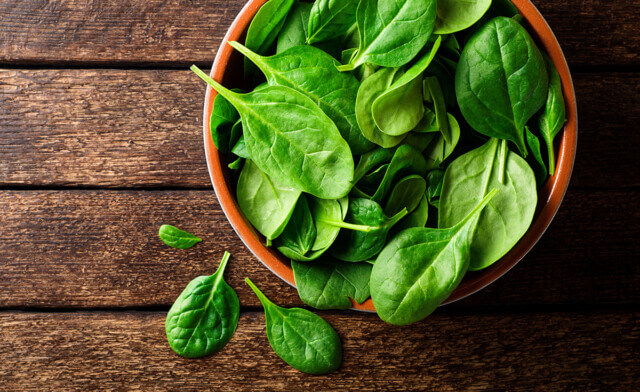Weight Loss Dog Food for Senior Dogs
In 2018, almost 60% of dogs could be classified as overweight or obese according to research done by the Association for Pet Obesity Prevention. As dogs age they become even more likely to be overweight or obese due to a variety of factors, which is why weight loss dog food for senior dogs is even more important. Learn about what you should look for in a weight loss food for your senior dog, the nutritional needs of older dogs, and ways to help your dog lose weight.
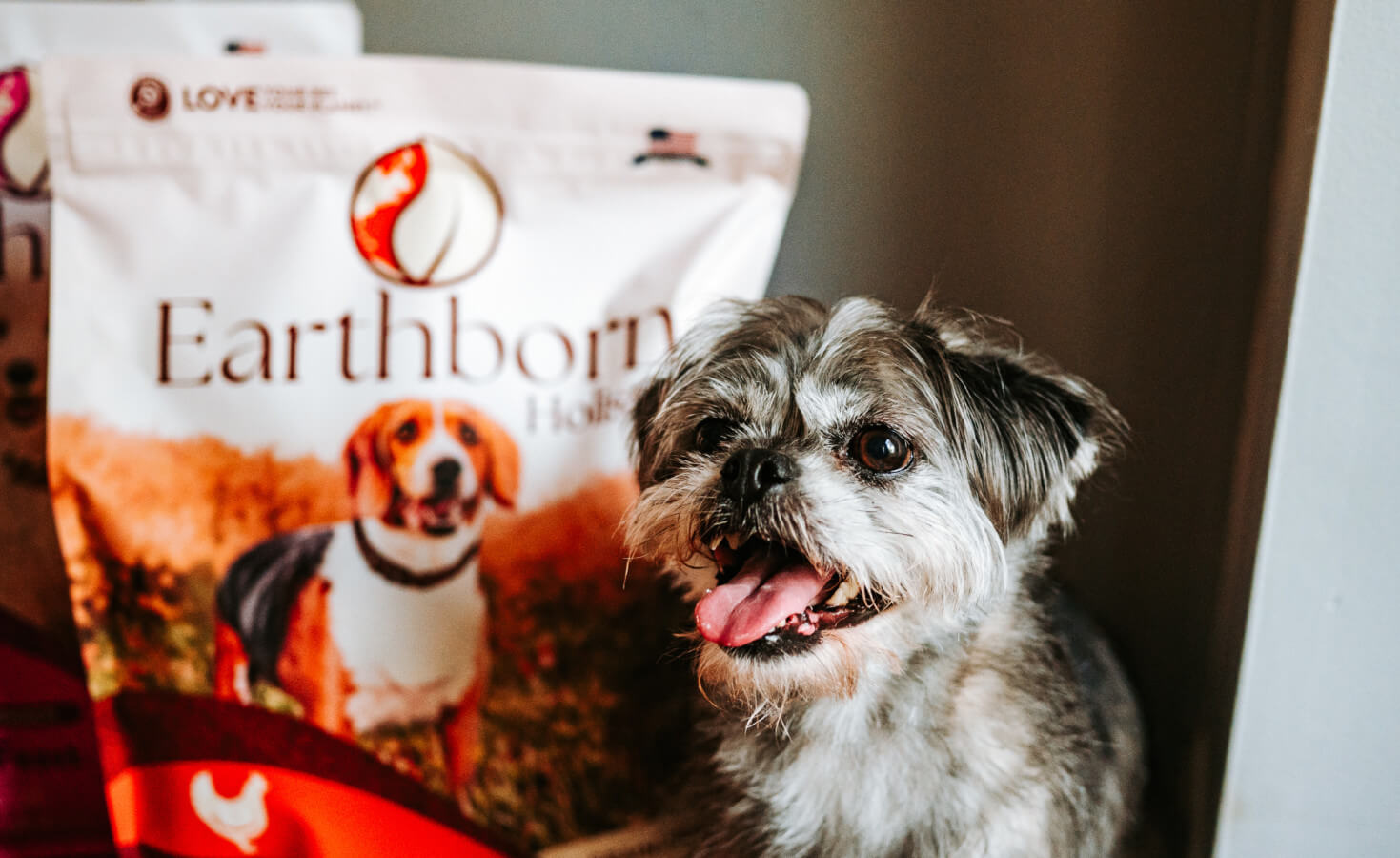
Weight Loss Dog Food for Senior Dogs
While it may surprise you, some of the best dog food for older dogs is actually weight loss dog food. The main reason for this is that weight loss or weight management dog food is low fat dog food.
Low fat dog food is important for senior dogs because as they age, their metabolism typically slows down. Pair that with a typical decline in activity and your senior is more susceptible to packing on some extra pounds. And while having an overweight or obese dog is not a good thing for a variety of reasons, it’s even more difficult on senior dogs who typically have a harder time losing excess weight as well.
One of the main reasons a low fat dog food is recommended for seniors is that low fat recipes typically contain glucosamine and chondroitin sulfate, supplements that help maintain joint health. As your dog ages, their joint health is likely to weaken making them prime targets for health issues like Osteoarthritis or breathing problems. If your senior dog has weakened joints from aging and is also overweight, they’re putting even more extra weight and pressure on their already fragile joints. This is why the best senior dog food for weight loss is not only low fat, but also contains glucosamine and chondroitin sulfate to help maintain joint health.
In addition, looking for a food that is easy to digest is another thing many pet parents look for. An easily digestible dog food is important for seniors who may have developed sensitivities over the course of their lives or have developed health issues that make it harder for them to digest certain ingredients.
Senior Dog Nutritional Needs
There are a few things you should look for as far as nutritional requirements for senior dogs. A low fat, high fiber dog food that’s also a low sodium dog food is what you should be looking for.
Low fat dog food and low calorie dog food is important for all of the reasons we’ve discussed already, but especially because obesity in senior dogs is extremely common. Feeding your senior dog a low fat diet is important to make sure that they’re not putting on extra pounds that could put extra stress on their body as they age. If your senior is at a healthy weight, low fat dog food will also help them maintain that weight to avoid other obesity-related health issues as well.
A high fiber diet is also important for senior dogs. High fiber dog food not only ensures that the food gets broken down more slowly, but it also works to keep your dog full longer. Keeping your dog feeling full longer is especially useful if you’ve decreased your dog’s food intake for weight loss purposes. Additionally, high fiber dog food will also help dogs’ blood sugar stable between meals, something that’s important if your senior dog has developed diabetes.
Senior dog protein requirements are maybe not what you’d think. High protein diets are actually recommended for senior dogs. According to AKC, “Healthy seniors need more protein, not less, in order to fuel muscle. Loss of muscle mass is a major problem in older dogs. Some seniors lose so much muscle they can no longer walk unassisted.”
Finally, you should also look for a low sodium dog food. This will typically go hand-in-hand with a low fat or weight management diet, but it’s worth noting. As dogs age, they also become more susceptible to heart disease which high levels of sodium can also contribute to. Our Weight Control recipe has relatively low sodium if you’re looking for a dry kibble recipe and our Chip’s Chicken Casserole or K95 recipes are all relatively low sodium options if you’re in the market for a wet food.
How Many Calories Should a Senior Dog Eat?
Oftentimes, pet owners are quick to turn to Google to find out how many calories their dog should eat when, in reality, this isn’t a question Google can accurately answer. How many calories your dog should eat depends on a variety of factors like your dog’s weight, age, breed, size, environment, activity levels, and more. If your goal is to help your senior dog lose weight, the exact number becomes even more of a mystery.
However, this is exactly why we always recommend talking with your vet to determine how many calories a dog of any age should eat and exactly how much of your chosen dog food that means you should be feeding per day.
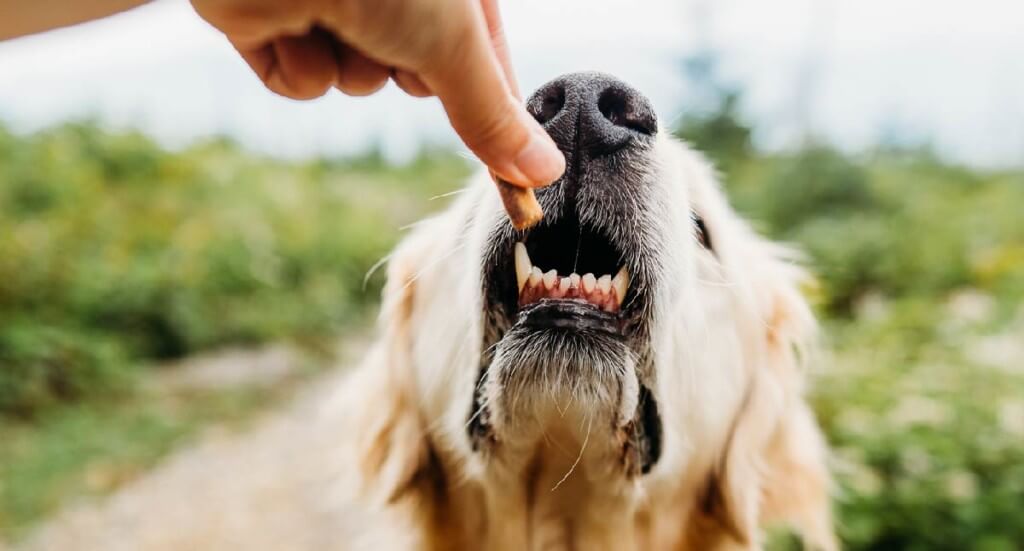
Are Senior Dogs Prone to Obesity?
According to Dr. Jerry Klein, AKC chief veterinary officer, “Dogs of all ages can be obese, although the greatest prevalence of obesity occurs in dogs between 5 and 12 years old. This condition may result in serious health problems, decrease longevity, and detract from quality of life.” Between decreasing activity levels, common overfeeding, and lack of obesity prevention, senior dogs are more prone to obesity. On top of that, the metabolisms of geriatric dogs (older dogs) have a tendency to slow down as they age as well.
This is another reason why senior dog health is so important. Feeding a quality dog food will only help so much if you’re trying to keep your dog on the right end of the body condition score chart.
How to Help Senior Dogs Lose Weight
In order to help your dog lose weight, you’ll want to make sure that you’re feeding a high quality dog food that is low in fat content. In addition to dog foods for weight loss, you might also consider finding joint supplements with chondroitin and glucosamine for dogs if you haven’t already. While many weight management or low calorie dog food recipes will already contain glucosamine and chondroitin sulfate, making sure your dog’s joints are supported if they need to lose a few pounds is super important and will help make any exercise efforts easier on them. Further, make sure that you have your dog on a proper feeding schedule, as this will also help with metabolism.
In addition to low calorie food, low calorie dog treats are another thing to keep in mind. Overfeeding treats are a common culprit of weight gain, so making sure your dog’s daily treat intake isn’t taking up a ton of calories will make a big difference in their weight loss journey.
Low Impact Exercises
In addition to a healthy, low fat diet, you may wish to find some senior dog exercises that can assist in your weight loss efforts. When looking for exercises for your senior dog, it’s best to look for low-impact exercises. Because joint health is so important for seniors (and especially those carrying a few extra pounds) you don’t want to irritate or cause any more stress on their joints by engaging in a high-impact exercise regime. Instead, you should consider these low-impact exercise alternatives:
- Walking
- Underwater Treadmill
- Swimming
- Scent Work
While you may be tempted to hit the streets running, walking will be much easier on your senior dog. Start with short walks around the block if you need to and slowly build up your pup’s stamina over the course of a few weeks or months.
If your dog’s joint health is a more severe issue you need to work around, finding an underwater treadmill near you may be worth looking into. According to Dog Training Nation,
“Underwater treadmills are filled with a predetermined amount of water based on a dog’s height and exercise needs. By adding water during walks, it not only adds a bit of resistance, but buoyancy as well. Water buoyancy allows the dog’s body to float, yet still move underwater, which relieves pressure from joints and ligaments. Also, warm circulating water provides additional pain control.”
Similar to the underwater treadmill, swimming is another option for your dog if putting pressure on their joints is an issue. If your dog likes swimming, consider heading to the pool or finding a safe pond or lake they can romp around in for a while. The water still provides resistance while the buoyancy helps relieve pressure from your dog’s joints.
Scent work is another low-impact activity that not only gets your dog up and moving around, but gets their mind moving too. While it’s probably not the first thing that comes to your mind when thinking about dog sports, it’s not one you should underestimate.
Rachel Jezowski, an owner of three golden retrievers who participate in scent work, says, “I’ll be honest–-Scent Work wasn’t a sport I was initially drawn to or something I thought I would enjoy as much as I do, but it’s quickly become a favorite of mine for me AND the dogs. I can tell how much they love it, which makes it that much better, and it’s something fun we can do together every week. After our first trial, we were hooked and I’m looking forward to many more years of competition with all of my dogs.”
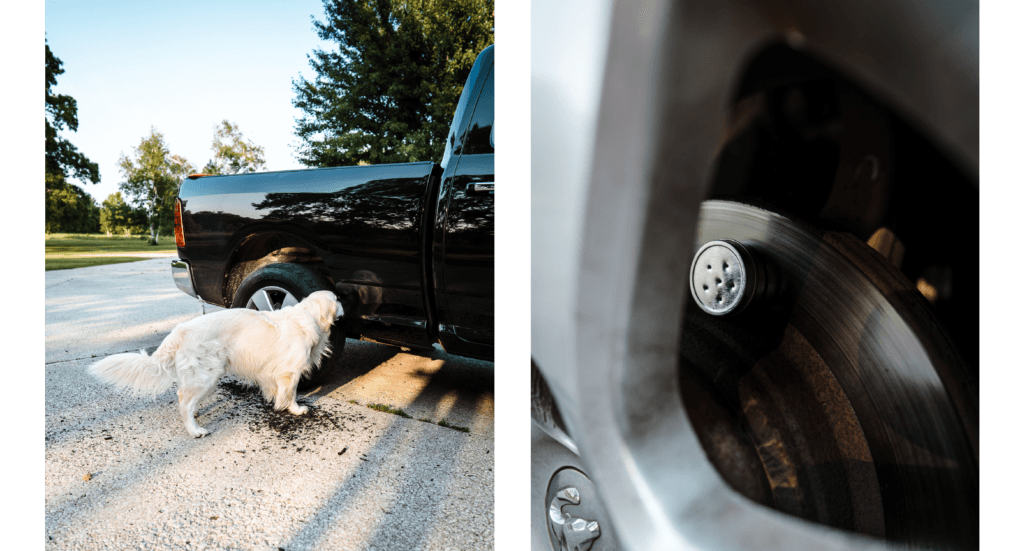
Senior Dog Health Issues
As your dog gets older, it’s important to watch for oncoming health issues. Here are some common senior dog health problems you should be on the watch for:
- Joint problems like arthritis or osteoarthritis
- Hearing and vision loss
- Dementia
- Incontinence
- Obesity
- Cancer
- GI issues
Joint issues are the top health issue to look out for as your dog ages, as it can result in a variety of other issues. Joint issues in seniors, if not treated correctly, can quickly turn into more serious health problems like arthritis or osteoarthritis. Both of these issues, unfortunately, can lead to a decrease in quality of life as your dog has a harder time moving about like they used to.
Dementia is another health issue especially prevalent in senior dogs. You’ll need to visit your vet to get a diagnosis and also to rule out other health issues, as the disorientation that is a symptom of dementia could actually be mistaken for other issues like hearing or vision loss. Other symptoms of dementia include things like changes to your dog’s normal sleep cycle, not asking to go outside to use the bathroom like they normally do (and therefore making messes inside), and other activity and interaction changes. According to PetMD, medications that can help dogs with dementia include Selegiline, antidepressants, and Anipryl, so talk to your vet to see if any of these could help you.
Cancer is another health issue that, unfortunately, is also more prevalent in dogs as they age. According to the Flint Animal Cancer Center at Colorado State University, cancer is the leading cause of death in pet dogs in the United States, with as many as 50 percent of pets dying from the illness. The Flint Animal Care Center details these top 10 cancer warning signs that you should watch for:
- Abnormal swellings that persist or continue to grow – Pet your pet! This is the best way to find lumps, bumps, or swellings that could be anywhere on the body.
- Sores that do not heal – Non-healing sores can be a sign of infection or cancer. Your veterinarian can determine the reason why the sore is not healing.
- Weight loss – If your pet is not on a diet, but is losing weight, illness could be to blame.
- Loss of appetite – It is not normal for pets to lose their appetite. This may be a sign of illness.
- Bleeding or discharge – Any abnormal fluid discharged from any part of your pet’s body should be checked out by our veterinarian. Note that vomiting and diarrhea are examples of abnormal discharge.
- Offensive odor – Offensive odors from your pets’ mouth, ears, or any other part of your pet’s body, should be checked out. Foul odors are common signs especially for tumors in the mouth, nose, or anus.
- Difficulty eating or swallowing – This is a common sign of cancers of the mouth and neck.
- Hesitation to exercise or loss of stamina – This can be one of the first signs that your pet is not feeling well.
- Persistent lameness – Limping or other evidence of pain is generally associated with arthritis or muscular injury, but it can also be a sign of cancer, especially of the bone and should be evaluated by your veterinarian.
- Difficulty breathing, urinating, or defecating – These problems are likely caused by an underlying health problem. Schedule a veterinary appointment if your pet displays any of these symptoms. Early detection and treatment are important for pets, just as for people.
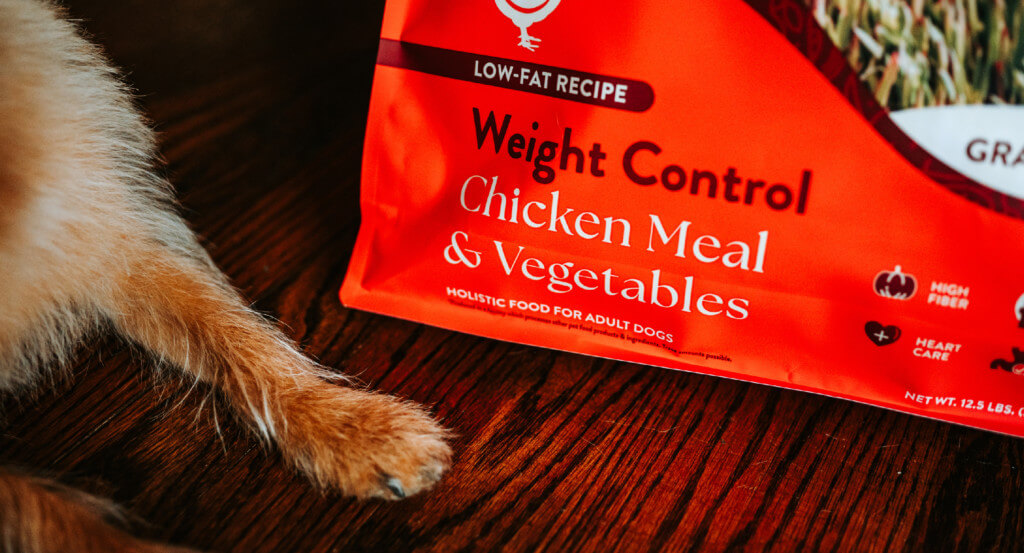
If your senior dog is always hungry or your dog is eating more than usual, it’s a good idea to take a trip to your vet, as gastrointestinal issues are common with aging. According to Bond Vet, here are some of the most common signs of GI issues in dogs:
- Vomiting
- Diarrhea, with or without blood or mucus
- Constipation
- Increased gas or flatulence
- A lack of appetite
- Weight loss
- Fever
- Dehydration
- Abdominal pain (you may notice a hunched posture, a “praying” posture with the forelimbs and chest on the floor while the hind end is raised, or yelping when you try to pick up your pup)
- Abdominal enlargement/distension
- Distress or inability to get comfortable
With any health issue in dogs of any age, it’s always best to check with your vet to have them make any diagnoses necessary and to also rule out issues that aren’t present in your dog to help create a plan of action. Your vet is one of the best assets you have as a pet parent, so make sure you take advantage of the knowledge they have to keep your pet healthy!
When is a Dog Considered a Senior?
The age at which a dog is considered a senior varies in the same way that the age varies when a dog is no longer a puppy. It largely depends on their breed, size, and dog life span–for example, a Great Dane will be a puppy longer and become a senior sooner than a Yorkie will. The large breed Great Dane will stay a puppy for closer to two years and become a senior closer to four or five years of age whereas the small breed Yorkie will only be considered a puppy for a year or so and won’t be considered a senior until they’re six or seven years old. In general, PetMD says that when your pet reaches half of their life expectancy is when they’re typically considered a senior.
How to Strengthen Your Dog’s Brain Power
As dogs age, they become more susceptible to many health issues, but brain-related ones like canine cognitive dysfunction, or dog dementia, are common. According to WebMD, dog dementia progresses similarly in dogs as it does in humans and vets will first rule out a variety of other health issues that can cause disorientation before diagnosing dementia.
While there’s no cure for canine cognitive dysfunction, brain games for dogs can help ease your dog’s anxiety. When it comes to your dog’s mental health, dog enrichment toys can help to keep your dog’s brain stimulated. Using enrichment toys and learning new tricks can help with your dog’s memory. Other dog enrichment ideas include using puzzle toys during feeding times and going for walks to allow them to sniff to their heart’s desire.
Senior Dogs and Dental Issues
According to VCA Hospitals, dental disease is one of the most common medical conditions seen by veterinarians and over 80% of dogs over the age of three have active dental disease:
“Periodontal disease is a term used to describe infection and associated inflammation of the periodontium (the tissues surrounding the tooth). Specifically, there are four tissues that make up the periodontium. They are the gingiva, the cementum (covering of the root surface), the periodontal ligament (the ligament attaching the tooth root to the bone) and the alveolar bone. Periodontal diseases begin with gingivitis and left untreated, the infection often spreads deeper into the tooth socket, destroying the bone. Ultimately, the tooth becomes loose and may fall out over time.”
While kibble and chews are great for often preventing a good amount of tartar buildup, VCA Hospitals also says kibble and even the best dental chews for dogs aren’t super effective at removing tarter buildup and professional scaling is often needed to remove it. If your senior dog has decent dental health and you’re looking for preventative options, you might look for soft dental chews for senior dogs or senior dog treats.
Wet, Dry, or Both? Choosing Food for My Senior Dog
When it comes to whether you should feed your senior wet dog food, dry dog foods, or both, this is a decision that’s largely personal choice. For many people, wet dog food may not be as cost effective as kibble that can be bought in large bags to last several weeks. For others with picky eaters, dry dog food doesn’t offer the same palatability as wet food.
That being said, sometimes your dog will do best with the best of both worlds. Mixing wet and dry dog food is very popular and can help solve both issues mentioned above as you don’t need as much wet food but you still get the palatability from it. You can mix dog food brands, but finding a brand you (and your dog) like is always ideal to keep it consistent. If you can find a great dry food for older dogs and soften it for your senior with some wet food, you’re sure to please your pup at meal time. The best wet dog food to mix with dry is typically a wet food with a similar protein source to avoid stomach troubles, but if your dog typically does well with a variety of proteins feel free to change it up from time to time.
All Life Stages Dog Food
The main difference between senior dog food vs regular dog food is typically the calorie content. As mentioned earlier, senior dogs’ metabolisms are often slower than that of puppies or younger dogs, so they require a much lower caloric intake to avoid gaining weight.
While we love a healthy, nutritious all life stages dog food recipe, you might want to think twice before feeding your overweight, senior dog an all life stages recipe. According to Dr. Anne Huss, Earthborn Holistic’s Director of Nutrition Services, “Diets intended for all life stages may be higher in energy density and therefore not ideal for an adult dog with limited energy expenditure who may be obese prone.”
For example, all life stages are crafted with the nutrients of puppies in mind. Puppies, however, require a higher caloric intake than older dogs to keep up with their quick growth so instead of a low calorie dog food that is needed for weight loss, all life stages recipes are typical more high calorie dog food options. If you feed an already overweight dog an all life stages formula, it could hurt more than it helps. For this reason, make sure to choose formulas that are for maintenance as indicated on the pet food label like our Weight Control or Duke’s Din Din recipes if you’re trying to help your senior dog lose weight.
When choosing any dog food for any age, it’s important to always take a look at the AAFCO Nutritional Adequacy Statement on the back of the pet food label to know which AAFCO Dog Nutrient Profile the recipe you’re looking at is aligned with. This will help you make sure that your dog is getting all of the nutrients they need for their specific life stage.
Symptoms of Overfeeding Your Dog
If you’ve started wondering, “Am I feeding my dog too much,” the answer is most likely yes. However, there are a few ways to determine if your dog is showing risks of obesity due to overfeeding.
Decreased mobility is a top symptom of overfeeding your dog. As your dog puts on weight, it causes extra stress on their joints. If you have a senior with already poor joint health, you’ll typically see a faster decline. Extra weight on your dog’s joints can make moving around uncomfortable for them and things like jumping up on the couch or walking up or down stairs can become extremely difficult.
According to Danny Tufaro, a veterinarian who spoke with Business Insider, “Another very common symptom of overfeeding is the bowel movement is normal in the morning and then during the course of the day it gets very soft. That’s a very, very easy way to determine that you’re overfeeding your pet. And that’s very common, especially with the more caloric, dense diets that are on the market. Different dogs have different activities, different foods have different caloric densities. So you have to try to maintain their weight, maintain their stool, and that’s really the way to do it.”
How Much to Feed a Dog
It’s important to note that while not overfeeding your dog is an essential part of keeping them at a healthy weight, how much to feed a dog is not so black and white. You can get a good idea as far as how much to feed your dog from the feeding guidelines on the label of your dog’s food. However, you should take these recommendations with a grain of salt.
How much food your dog should eat actually depends on a variety of factors that the food label can’t predict–things like underlying health issues, the environment where you live, your dog’s activity levels and more are all factors that should be taken into consideration when deciding how much to feed. For this reason, a visit with your vet is essential when determining exact amounts.
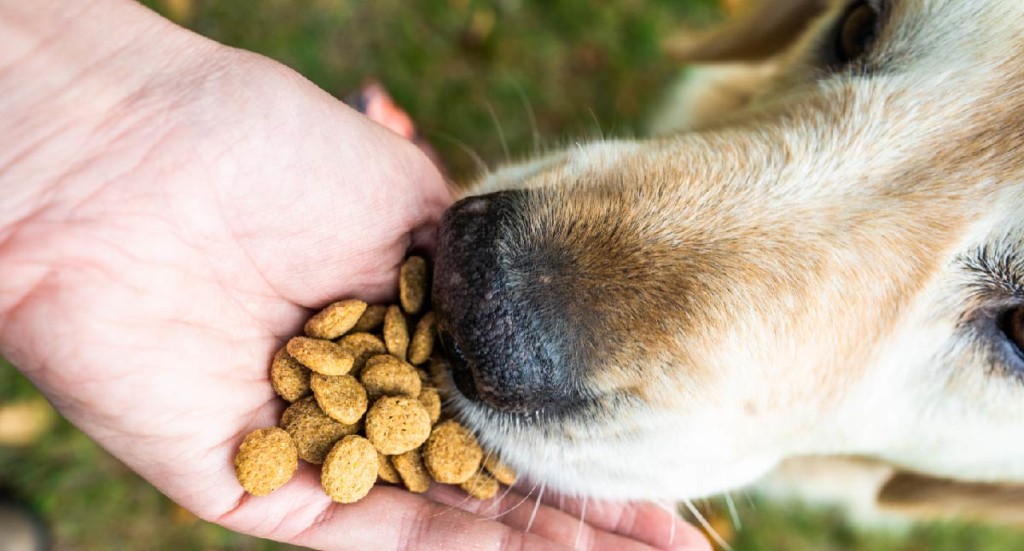
Underweight Senior Dogs
If you’re by chance looking for the opposite of weight management dog food for your senior, there is a healthy way to help your dog gain weight if they’re not quite at the weight they should be. For seniors, being underweight often has an association with dental problems in dogs. Just like if you have a toothache yourself, dogs with dental problems may have a harder time chewing crunchy kibbles.
In these cases, wet food like canned dog food make great options for dog foods for weight gain. Because there’s not much crunch that could cause your dog pain in their teeth, your dog may be able to tolerate eating more and therefore gain weight.
According to PetMD, your senior dog losing their appetite is pretty common:
“It’s common for older dogs to have reduced appetite, Nunez says. Causes vary. For example, some dogs have gastrointestinal problems that bring on nausea, while others lose their appetite because of cancer.
“‘When a dog won’t eat,’ Metzger says, ‘make sure your veterinarian rules out any underlying health problems, such as dental disease in dogs, diabetes, kidney disease, or cancer.’ He also says that when dogs lose interest in dry food, adding warm water, chicken broth, or a small amount of canned food can make it more appealing.”
As PetMD says, it’s important to always check in with your vet if you notice any changes in your dog’s appetite before taking matters into your own hands and changing up their diet, especially if you’re trying to help your dog lose weight. Adding things like canned food to your dog’s food if they’re trying to lose weight can have a negative impact on their weight loss journey, especially if that’s paired with an underlying health issue.
How to Put Weight on a Dog
Just like weight loss, weight gain should also be a journey that is influenced and closely supervised by your vet. Getting your dog to an ideal weight can be either feeding more of a quality food, or finding a better quality food that meets the needs of your individual dog.
If your senior needs to gain weight, it doesn’t automatically mean that they need to eat more. For dog foods that are complete and balanced, feeding more than the recommended amount could throw off the intended balance of nutrients your dog needs. Instead, you might just need a different food with a higher calorie content.
For example, while our Weight Control recipe–which is what we typically recommend for seniors–comes in at 315 kcal per cup, our Adult Vantage recipe contains 350 kcal per cup and is also a great option for seniors if they’re on the other end of the weight loss spectrum. Weight Control is higher in protein, but even Adult Vantage also contains glucosamine and chondroitin sulfate and is made with high quality turkey protein as the first ingredient.
In the end, feeding your senior dog healthy, nutritious food is only one piece of the puzzle. Keeping your senior active and making sure they’re not being overfed are also two important things to keep in mind if you’re trying to keep your senior dog healthy and especially if you’re trying to help them lose weight.



